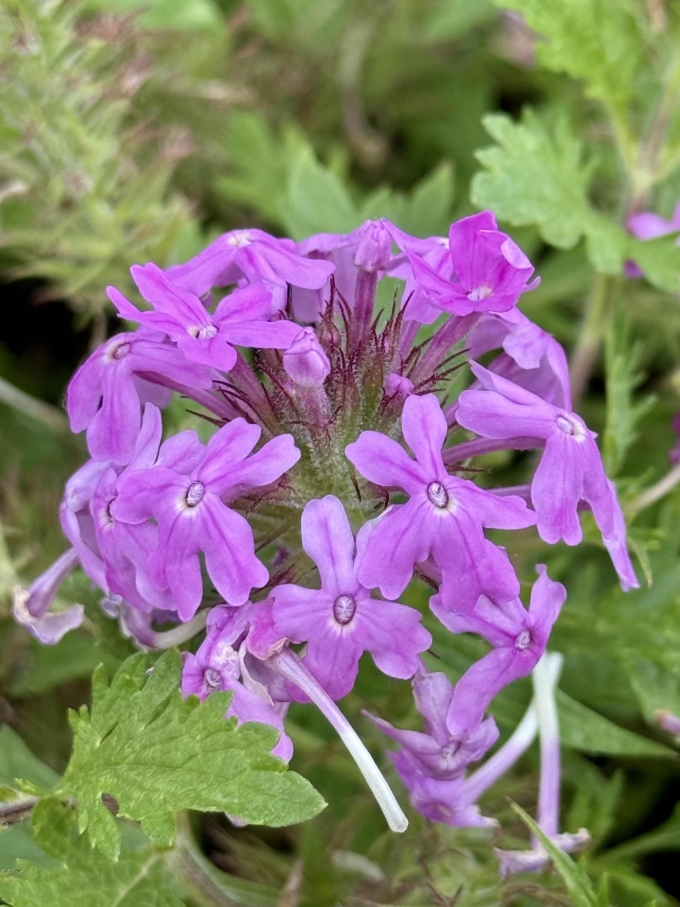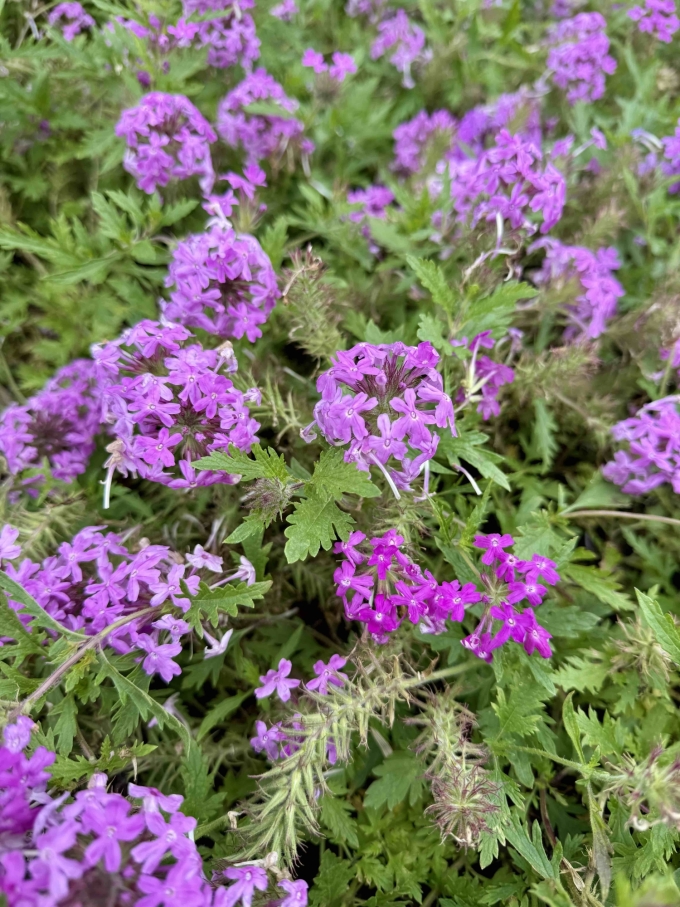Common Name: Rose Verbena
Family: Verbenaceae
Plant Type: Herbaceous Perennial (often grown as an annual in colder zones)
Hardiness Zones: 6–9 (may overwinter in sheltered sites in Zone 5)
Height: 0.5 to 1.0 foot
Spread: 1.0 to 2.0 feet
Bloom Time: May to October
Bloom Description: Clusters of rose-pink to magenta flowers
Sun Exposure: Full sun
Water Needs: Dry to medium
Soil Preference: Well-drained; sandy or loamy soils preferred
Maintenance Level: Low
Suggested Use: Groundcover, native borders, pollinator gardens
Attracts: Butterflies, bees
Tolerates: Drought, heat, rocky soils
Notable Features: Long bloom time, spreading habit, semi-evergreen in mild winters
Native Range: Central and southeastern United States, including parts of southern and southeastern Nebraska; common in prairies, glades, and roadsides.
Nebraska Growing Notes:
Glandularia canadensis is a tough, low-growing native groundcover that thrives in sunny, dry locations across southeastern Nebraska. It blooms profusely over a long period, attracting butterflies and other pollinators to garden beds and wildflower plantings.
While often treated as an annual in northern parts of the state, it may overwinter in protected microclimates or when planted in well-drained soil. Performs well in rock gardens, edges, or draping over low walls.
Landscape Use:
Great for filling gaps at the front of native borders, trailing over rock walls, or massing as a low-spreading pollinator groundcover. Pairs well with native grasses, coreopsis, or other sun-loving perennials.
Caution:
May spread beyond intended area in lean soils. Trim lightly to shape or rejuvenate after flowering flushes. Needs full sun for best bloom performance.
Garden Locations:
Sources:


